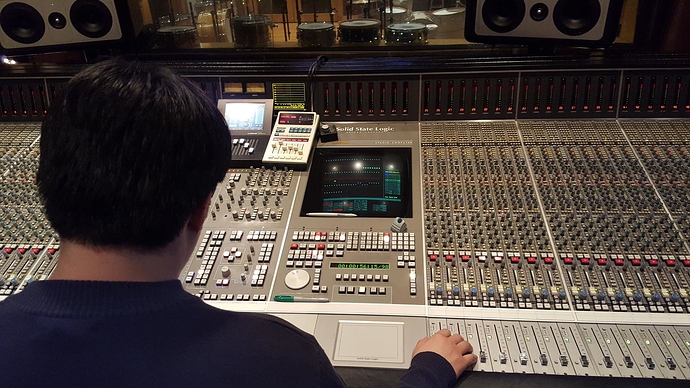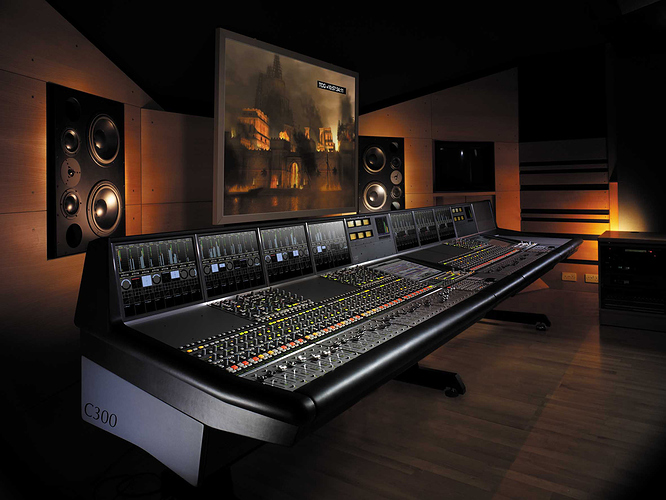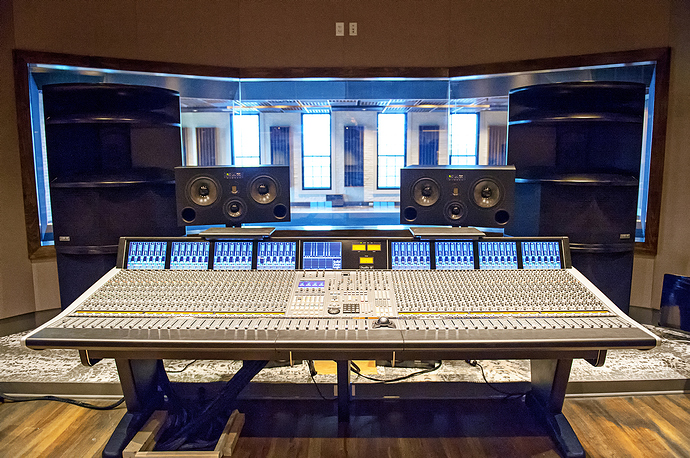I’ve always hated LCR mixing due to it bringing forth way too much separation into a mix. Good for headphones, terrible for speakers. Nothing worse to me than hearing toms and cymbals panned hard left/right. It just sounds disconnected to me and in my opinion, you ruin the listen because nothing is in between the lines.
Think about watching a concert. Toms don’t pan from the left all the way to the right. I just hate it and think it’s crazy to settle for 3 positions when you have 200. Think about it. How boring would pictures be if they only used 3 colors? Your pan positions are super important. Not only for your instrumentation, but your effects.
Too many hard pans with both instruments and effects can give you frequency masking. Though some would argue that point, if you mix two like instruments similarly and pit them in the same pan field, your chances for noticing frequency masking goes up drastically. Pan them differently, you just moved one out of the others way and they CAN coincide together.
That said, though this sounds like a bash on LCR, if it works.for you, that’s what matters most. However, I see it as being one dimensional where if you don’t use it, you’ll deliver not only tighter mixes from the lack to wide pans, you’ll have a cooler soundscape. Less separation equals a tighter, punchier mix everu time. Use hard pans for special effects. They will really jump out when you need them to.
Top down mixing? Color me ignorant, stupid or just plain out of the loop, but I’ve never heard of it. I will say this, those of you just dropping a compressor on the 2 bus are missing the point. Allow me to explain one of the most important reasons why we put comps on the master bus for those who may not know the reason behind it.
First off, a regular, digital compressor is not going to fully give you the same results. The reason? No tonal character. The whole idea of a 2 bus compressor is you put one on that literally colors the sound and then you mix into it. You don’t mix and then drop one on your master bus after. You CAN do it that way as there are no rules, but the technique is used to give a little analog warmth to a mix, or a little snap and pop depending on the compressor used. So the key is coloration as it forces you to mix differently.
Example: For those of you that use stock DAW plugs, chances are your fave comp doesn’t have tonal characteristics. Meaning, you notice increased/decreased highs and lows wjen using it. Most stock DAW plugs do not offer this feature. Mixing into this sort of comp will not give you the results the technique was created for. This is where a hardware comp can really make a difference.
But say we don’t have one. You need a tonal color comp like say an API 2500 or an Empirical Labs Fatso Jr etc. Those comps literally color the sound which makes you make decisions based on what you hear while mixing into the comp on your 2 bus. There are other tone type comps out there, but those are just two that I use that work incredibly well. And without them, I know I didn’t use them. So it’s not major. But it’s enough to know something was missing.
If the comp warms things up removing some highs, you’ll probably mix some of the highs back in. You probably won’t mix the highs it removed back in as they are usually 12k on up. So you’ll add a different sparkle…or maybe you won’t. That’s the thing…now you’re mixing into the comp and literally “gluing” the mix, which is where “2 bus glue” came from.
Now, you may use the comps to where they really sound dark which makes you add highs that create a poppy, punchy or punk mix. Or, you may select a comp setting that pushes more highs, therefore you use less highs, push things a little harder and you pick up some analog warmth and saturation tonality. This is where the Fatso comps shine for me.
As.for effects etc, if the mix can’t stand on its own with comp, eq or less, you’re headed in the wrong direction. Remember to treat all your effects as tracks. Eq, pan, compress if you need to, and always control how far the effects imagine goes out. Every stereo effect you use is equal to hard left/right. Add enough without eq, pan, and spacial adjustment and your effects could be as bad off as your instrument tracks.
So they all walk hand and hand. Gain staging is important here as the trim in your tracks not only effects track levels, it effects signals to effects. At the and of the day, whatever works is what someone should use. Break the rules and make others follow and benchmark you. However, there are a few rules and guidelines to it least keep in mind. 
Danny





 (I almost didn’t write that post because I couldn’t come up with the article.)
(I almost didn’t write that post because I couldn’t come up with the article.)


